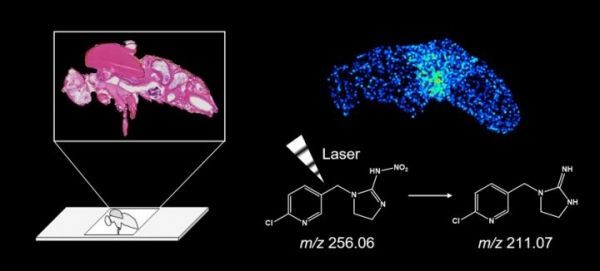Pesticides have been linked with declining honey bee numbers raising questions about how we might replace the many essential uses of these chemicals in agriculture and for control of insect-borne diseases. As many governments seek to restrict uses of pesticides, more information on how pesticides affect different insects is increasingly beneficial. Greater insight into how these chemicals interact with insects could help develop new and safer pesticides and offer better guidance on their application.
Now a team at Osaka University has developed a new method of visualizing the behavior of pesticides inside insect bodies. Their findings were recently published in Analytical Sciences and highlighted on the journal’s cover.
As lead author Seitaro Ohtsu explains, “There have been no reports on the distribution of agricultural chemicals in insects to date. This is probably because it’s very difficult to prepare tissue sections of Drosophilia specimens for imaging studies.”
Researchers from Osaka University examined an insect from the Drosophila-family, a type of fruit fly which is widely used for testing pesticides. They developed a technique that let them slice the insect body into thin sections for analysis while preserving the delicate structures of the specimen.
Read more at Osaka University
Image: This is the journal cover illustration. (Credit: Osaka University)


